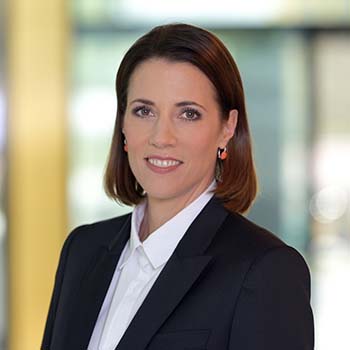
Introduction The social enterprise at work: Paradox as a path forward
The power of the social enterprise lies in its ability to bring a human focus to everything it touches, empowering people to work productively with technology to create lasting value for themselves, their organizations, and society at large.
2021 Global Human Capital Trends
Sign up to receive a copy of our new approach to Trends launching this winter
In just a few short years, the concept of the social enterprise—an organization whose mission combines revenue growth and profit-making with the need to respect and support its environment and stakeholder network—has grown from an intriguing new idea into a concrete business reality. BlackRock Chairman and CEO Larry Fink made headlines in 2018 when, in his annual letter to CEOs, he asserted that “society is demanding that companies, both public and private, serve a social purpose.”1 Barely two years later, the Business Roundtable, in a letter initially signed by the CEOs of 181 of the world’s largest companies that has continued to gain signatures since, redefined the purpose of a corporation as serving all stakeholders, not just shareholders.2 And at the 2020 World Economic Forum, purpose and ethics were central themes on the agenda.3 In fact, 50 percent of respondents in this year’s Global Human Capital Trends survey, which polled nearly 9,000 business and HR leaders in 119 countries, categorized their organization’s purpose as broadening extensively to include all stakeholders, including the communities they serve and society at large.
Learn more
Explore the Human Capital Trends collection
Watch the video
Learn about Deloitte’s services
Order a copy of Work Disrupted, Deloitte's new book on the accelerated future of work
Explore 5 lessons from the pandemic for the future of work
Go straight to smart. Get the Deloitte Insights app
Create a custom PDF
Driving the social enterprise’s accelerating momentum has been a continuing societal shift toward individual empowerment and advocacy in workers’ relationships with their employers. In 2018 and 2019, people went on strike in numbers not seen since the 1980s4 to demand changes ranging from better working conditions to gender pay equity.5 Concerns about access to employment, wage inequality, and organizations’ impact on communities continue to make headlines.6 These mounting societal expectations—combined, in many countries, with greater worker power due to low unemployment rates—have put human concerns front and center for organizations and society.
At the same time as these human concerns were playing out, another equally powerful phenomenon was underway: an intense focus on technology as a primary driver, if not the primary driver, of enterprise value. “Every company is a technology company” became a common mantra as organizations invested billions in “digital transformation” efforts intended to turbocharge value creation through innovative technological applications.
However, through it all, most organizations viewed their efforts to address human and social concerns as wholly separate from their efforts around technology—the two conversations ran on separate tracks. Even today, pundits who connect the two realms often portray human interests not only as separate from, but as antithetical to, organizations’ interest in capitalizing on technology to its fullest. Many individuals have come to subscribe to this latter view as well, most obviously in the belief that AI and robotics are an imminent threat to human employment.
Now, however, it’s time to challenge the view that technology and humanity are distinct domains, or even fundamentally at odds. We believe that the greater value often comes from a fusion of the two.
Last year, we put out a call to action on this front by asking organizations to “reinvent with a human focus.” But as we enter into a new decade, we have realized that that we need to go one step further. Instead of asking how to humanize a work environment inundated by technology, the deeper question for organizations is how they can leverage the environment that technology creates to humanize the world of work. By recognizing the possibilities of that environment, organizations can chart a path forward to embrace one of the greatest paradoxes they face today: Can organizations remain distinctly human in a technology-driven world?
A view that fuses the human and the technological—one that calls us to work with a world shaped by technology—can enable people and organizations to transcend the most challenging conflicts that exist in organizations today by making three bold shifts:
- Fostering belonging amid a desire for individuality. Technology creates a world where anything and everything can be individualized; yet humans desire a sense of belonging to a larger whole. Our survey results reinforce that belonging is a concern: seventy-nine percent of respondents said that “fostering a sense of belonging in the workforce” was important or very important to their organization’s success in the next 12 to 18 months. What if, instead of creating divisions, individuality could become a source of strength born of bringing together unique, complementary abilities in the pursuit of shared goals? To be able to do this, organizations need to optimize the power of individuals by connecting them with each other through their purpose at work.
- Creating security in a world of reinvention. Technology creates the need for people to constantly reinvent themselves; yet humans still desire a sense of security. This year’s survey results highlight the need for reinvention: fifty-three percent of our respondents said that between half and all of their workforce will need to change their skills and capabilities in the next three years. What if, instead of being perceived as a threat, reinvention could become the means for finding security in the midst of ongoing change? To be able to do this, organizations need to leverage reinvention as a way to increase their people’s potential for long-term success in work.
- Taking bold action in an age of uncertainty. Technology creates a sense that anything that can change, will; yet humans desire a sense of certainty to support bold steps forward. Here, our survey illustrates the uncertainty many organizations feel about their ability to navigate rapid change: ninety percent of respondents said that the accelerating need for organizations to change at scale and speed was important to their success over the next 10 years, yet only 55 percent felt that their organizations were ready to change at the scale and speed required. But what if, instead of prompting doubt, uncertainty could give rise to new possibilities: the opportunity to shape the future through decisive action? To be able to do this, organizations need to transform uncertainty into an informed perspective that helps them confidently navigate the future of work.
These three shifts represent a new set of attributes that characterize what it means to truly become a social enterprise at work (figure 1):
- Purpose: An organization that doesn’t just talk about purpose, but embeds meaning into every aspect of work every day
- Potential: An organization that is designed and organized to maximize what humans are capable of thinking, creating, and doing in a world of machines
- Perspective: An organization that encourages and embraces a future orientation, asking not just how to optimize for today, but how to create value tomorrow
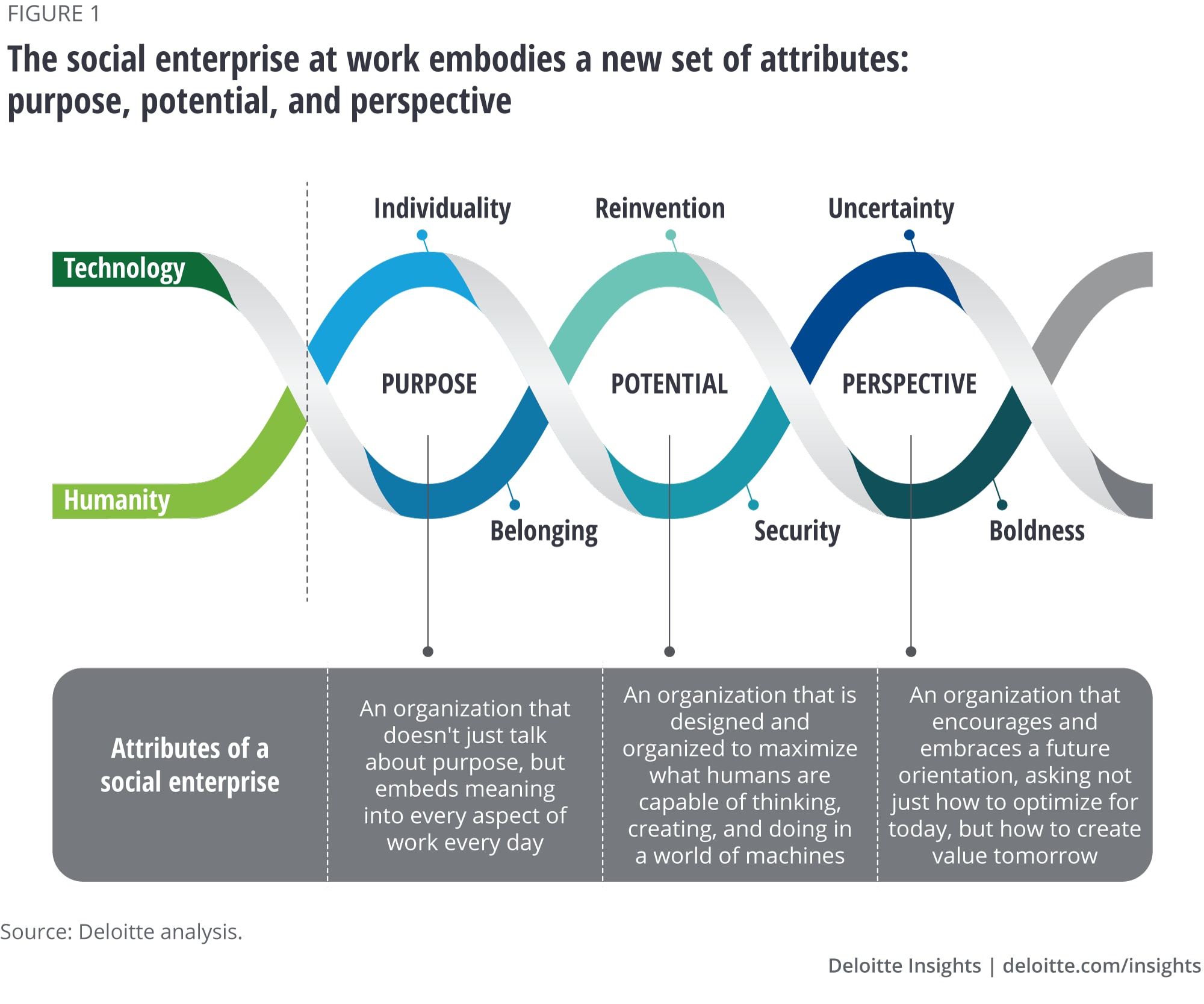
To embody these attributes takes a high degree of change—one that extends beyond broad cultural descriptions and lofty purpose/mission statements to the tactical processes, programs, and structures that bring an organization’s culture, purpose, and mission to life. To help you think through these changes, we have used the framework of purpose, potential, and perspective to organize our discussion of this year’s human capital trends. These trends look across the components of an organization’s infrastructure—from the systems that guide process execution to the metrics that track and measure strategic progress—and offer suggestions on ways to embed purpose, potential, and perspective into the very core of how they are designed and executed.
Purpose: Belonging amid individuality
Organizations that can harness their people’s complementary strengths in the service of a common goal can benefit from diversity to drive higher performance. We explore three ways that organizations can transform individuality into collective value: by fostering belonging through a sense of contribution; by supporting worker well-being through the thoughtful design of work; and by formulating workforce strategies based on a nuanced understanding of people’s attitudes and values.
Belonging: From comfort to connection to contribution. Organizational efforts to foster belonging have primarily focused on making every individual feel respected and treated fairly in an inclusive work environment. While this remains critical, leading organizations are forging a stronger link between belonging and organizational performance by strengthening workers’ connections with their teams and fostering their sense of contribution to meaningful shared goals. When teams are united by a common purpose, differences in opinion on matters unrelated to that purpose become less relevant—and differences in opinion in how to achieve that purpose become grounds for reasonable debate rather than a source of divisiveness.
Designing work for well-being: Living and performing at your best. Worker well-being is a top priority today, largely because of the widespread belief that it supports organizational performance. But how can organizations take something as personal as well-being and translate it into something that can have a broader impact beyond the individual? We believe the answer is to focus on the individual in work, not just the individual at work. To create a sense of contribution that translates into true organizational performance, organizations should expand their focus from programs adjacent to work to designing well-being into the work itself. By doing so, organizations can restructure work in ways that help workers not only feel their best but perform at their best, strengthening the tie between well-being and organizational outcomes and fostering a greater sense of belonging overall.
The postgenerational workforce: From millennials to perennials. Organizations have traditionally leaned heavily on workers’ age and generation to inform and differentiate their talent strategies. But today’s workforce is more complex than ever, making any single demographic lens of limited value. Forward-looking organizations are shifting their approach to better understand the workforce’s attitudes and values. Based on these insights, organizations have an opportunity to understand individuals’ distinct characteristics to bring them together in ways that can promote a greater sense of belonging. This, in turn, can help workers to maximize their contribution at work, derive enhanced meaning in their careers, and, ultimately, better align themselves with the purpose of the organization—one that not only understands what they can contribute, but how they uniquely can do so.
Potential: Security through reinvention
An organization that can help its people find security through reinvention can gain an advantage through its ability to embrace productive change. We highlight three areas where organizations have opportunities to capitalize on change: the integration of artificial intelligence (AI) into workgroups and superteams; the transformation of knowledge management through technology; and the cultivation of, and investment in, workforce resilience.
Superteams: Putting AI in the group. Despite dire predictions about workers being replaced by intelligent machines, leading organizations are taking a new tack: actively searching for strategies to integrate AI into teams to help produce transformative business results. These “superteams” hold the promise of allowing organizations to reinvent themselves to create new value and meaning, while giving workers the potential to reinvent their careers in ways that increase their value to the organization and the broader talent market.
Knowledge management: Creating context for a connected world. The power of people and machines working together offers the greatest opportunity for creating knowledge in human history. Advanced technologies are now able to automatically index, combine, tag, and organize information across multiple platforms. But to capitalize on these tools, organizations should also address the human element by creating a culture that helps people recognize that sharing their knowledge—contributing to personal and organizational reinvention—increases their value to the organization, ultimately offering them a greater sense of security at work.
Beyond reskilling: Investing in resilience for uncertain futures. Renewing workers’ skills is a tactical necessity, but reskilling is not a sufficient path forward by itself. Organizations should consider an approach that treats workforce development as a strategy for building worker and organizational resilience—equipping workers, and thus the organization, with the tools and strategies to adapt to a range of uncertain futures in addition to reskilling them for near-term needs. Through a resilience lens, reinvention shifts from something that may threaten worker security to the very thing that defines it: Workers who are able to constantly renew their skills and learn new ones are those who will be most likely to find employment in today’s rapidly shifting job market.
Perspective: Boldness into uncertainty
Organizations that view uncertainty as offering possibilities rather than threats can position themselves to take decisive action to shape an unknown future. There are three areas where organizations should move boldly ahead to create a future in which all stakeholders can thrive: Compensation, where taking a human-focused approach can help organizations meet emerging challenges; governing workforce strategies, where asking and answering new questions can help guide better strategic decisions; and ethics and the future of work, where organizations should examine their actions’ ethical implications to maintain their license to operate in a more transparent world.
The compensation conundrum: Principles for a more human approach. Considering how much time and money organizations spend on compensation strategies, processes, and programs, any change to compensation practices represents a significant decision. Yet many organizations are stuck in a seemingly endless cycle of compensation reviews, reforms, and rollouts. To take bold action in the face of uncertainty, organizations need a new path forward that is anchored not only in data and benchmarks, but also in a set of human principles that reflects the fact that compensation is more than a set of numbers—it’s a reflection of how organizations value individuals and how individuals value organizations.
Governing workforce strategies: New questions for better results. As workforce strategies have evolved over the past decade, workforce metrics and governance have not kept pace. Today, organizations need forward-looking insights on every trend shaping human capital. Organizations should begin to ask fundamentally new questions that can inform bold decisions around critical human capital risks and opportunities, even as uncertainty about the future of work, the workforce, and the workplace persists.
Ethics and the future of work: From “could we” to “how should we.” As the future of work rapidly evolves and organizations integrate people, technology, alternative workforces, and new ways of working, leaders are wrestling with an increasing range of ethical challenges. These challenges are especially pronounced at the intersection between humans and technology. In the face of increasing ethical challenges, organizations should make intentional and bold choices. Those choices need to be framed by a change in perspective: a shift from asking only “could we” to also ask “how should we” when approaching new ethical questions.
For the last chapter of this year’s report, we address HR directly. As the fusion of humans and technology at work accelerates, the future of HR is one of expanded focus and extended influence. HR should look to broaden its focus from employees to the organization and to the entirety of work and the workforce. And HR should increase its sphere of influence beyond the traditional lines of the function to the enterprise and to the business ecosystem as a whole.
The attributes of purpose, potential, and perspective are admittedly complex. Organizations have tended to view the conflicts within each as trade-offs: belonging or individuality, security or reinvention, boldness or uncertainty. But part of embracing the seeming paradox of fusing the technological with the human is to look beyond trade-offs to find ways to integrate these seemingly opposed pairs. In each of the following chapters, we show how organizations can work within an environment shaped by the fusion of technology and people to embed purpose, potential, and perspective into the DNA of how they operate. For the power of the social enterprise lies in its ability to bring a human focus to everything it touches, empowering people to work productively with technology to create lasting value for themselves, their organizations, and society at large.
Appendix: Trend importance/readiness and survey demographics
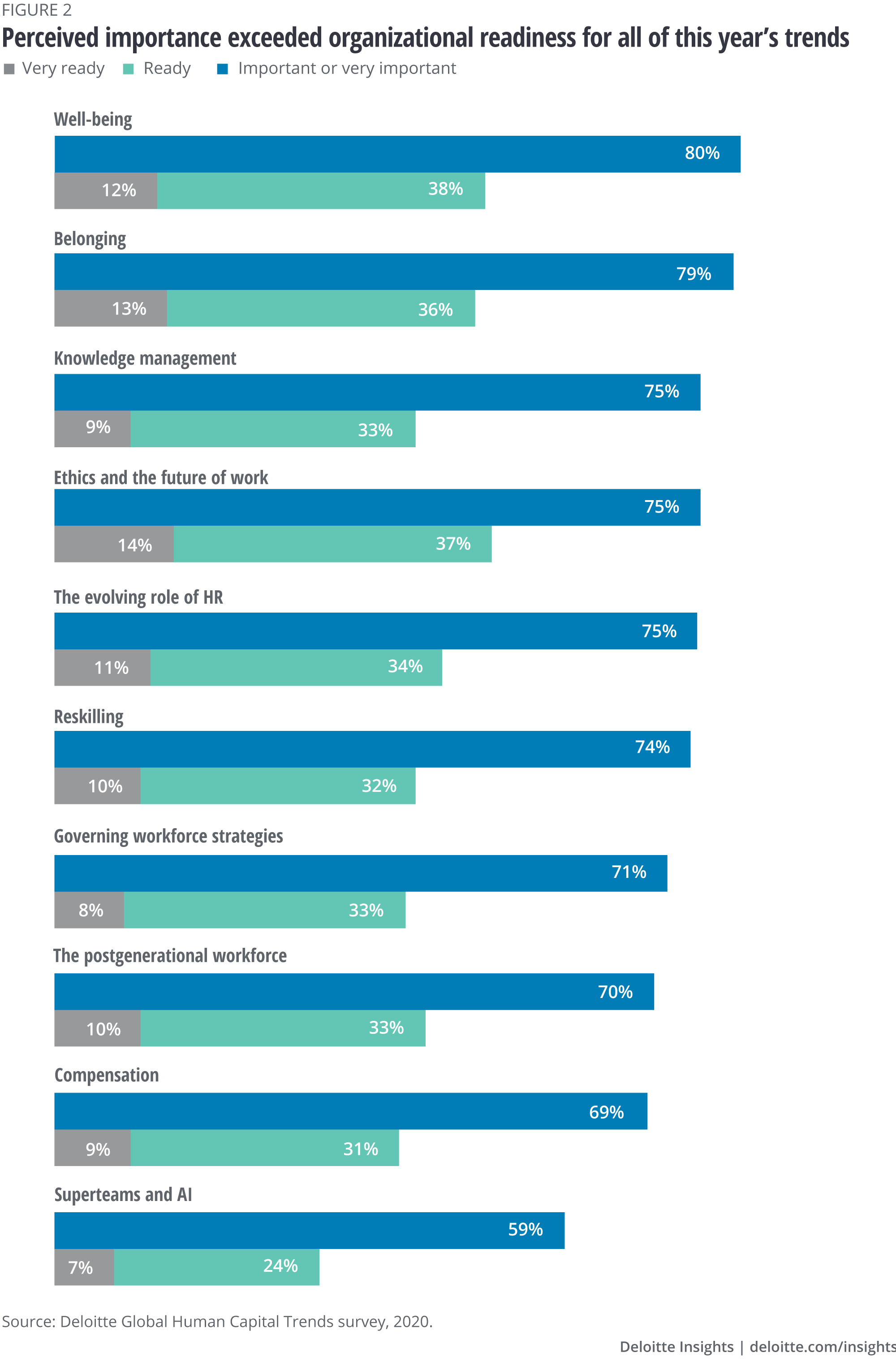
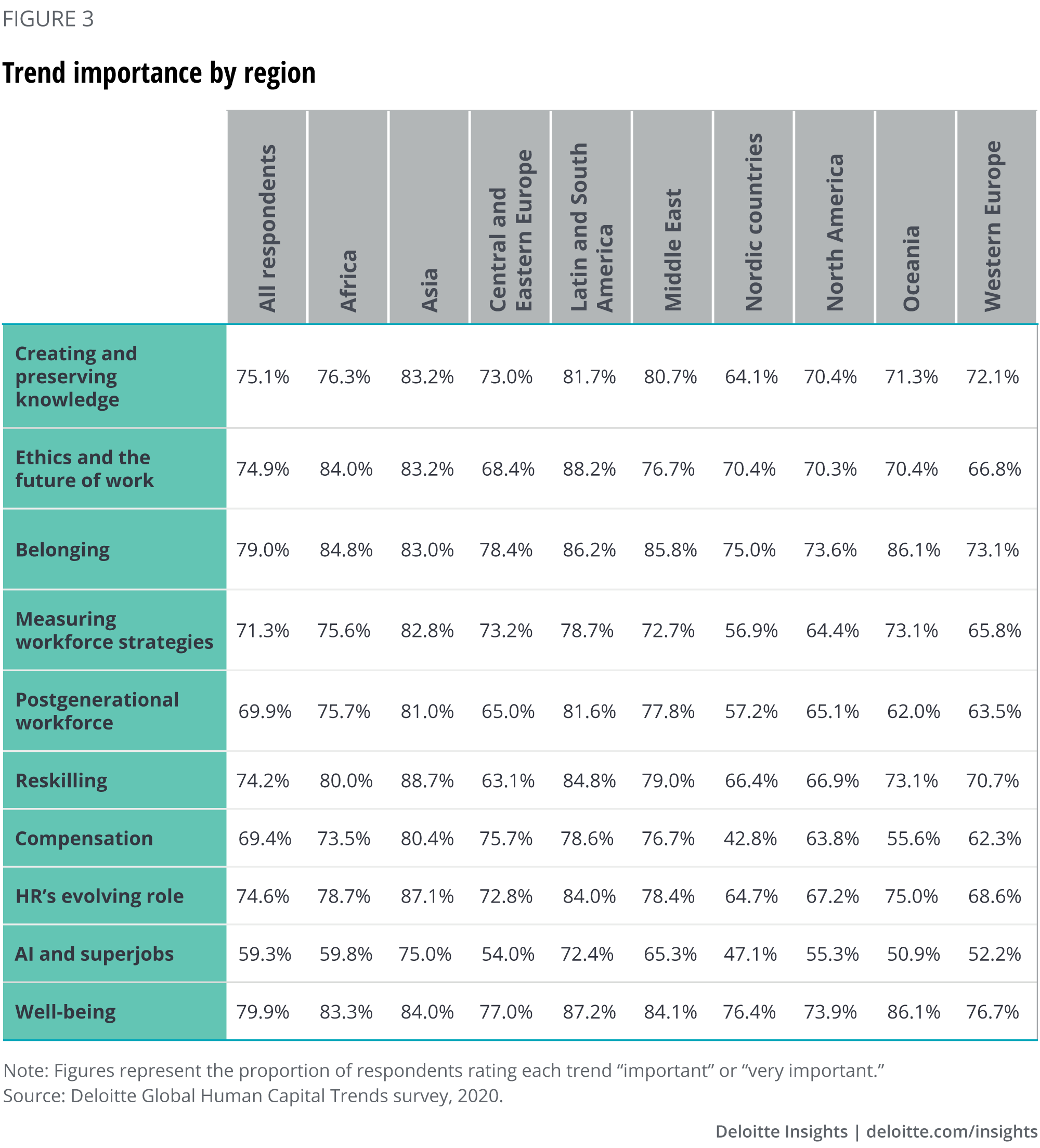
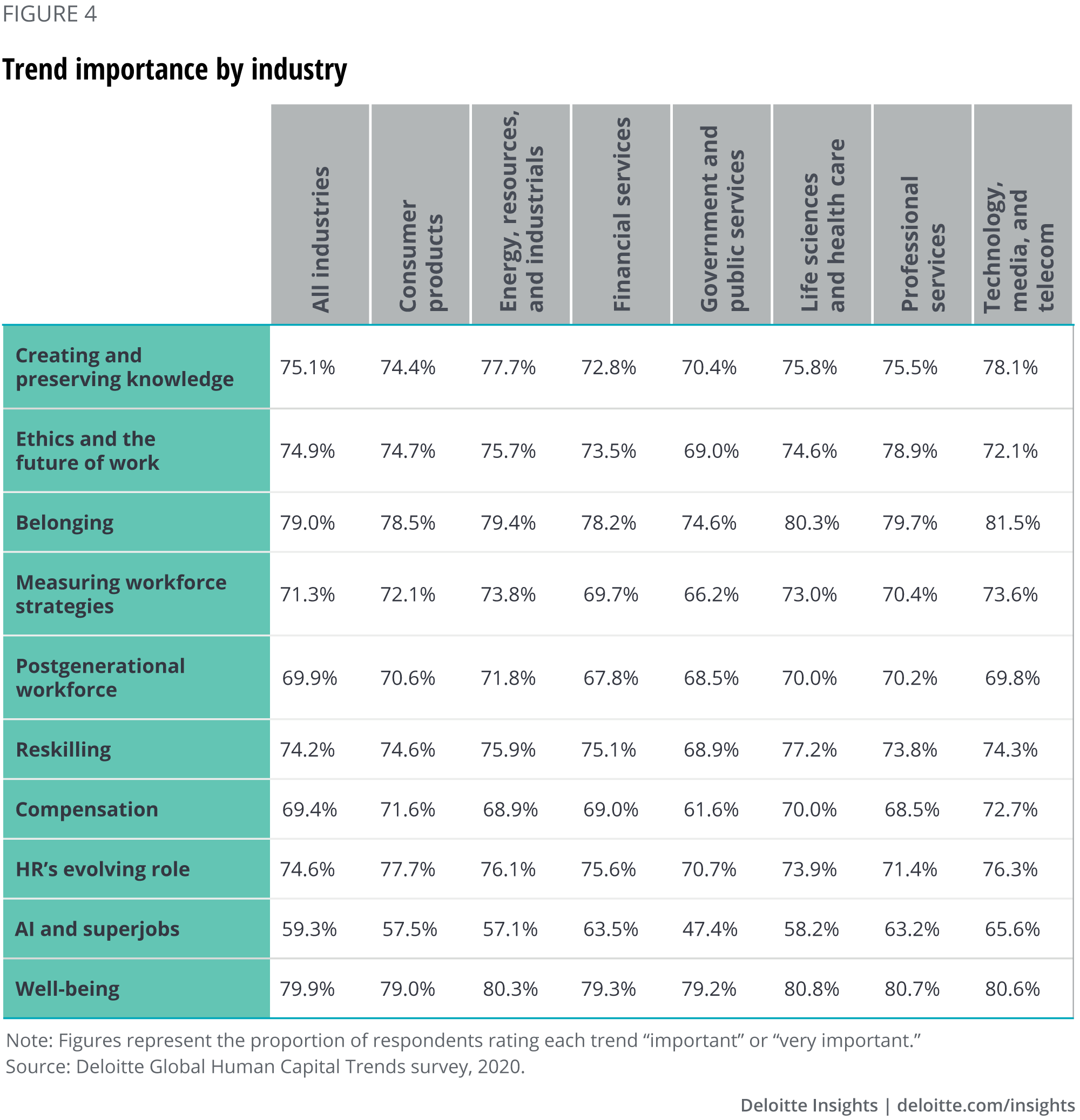
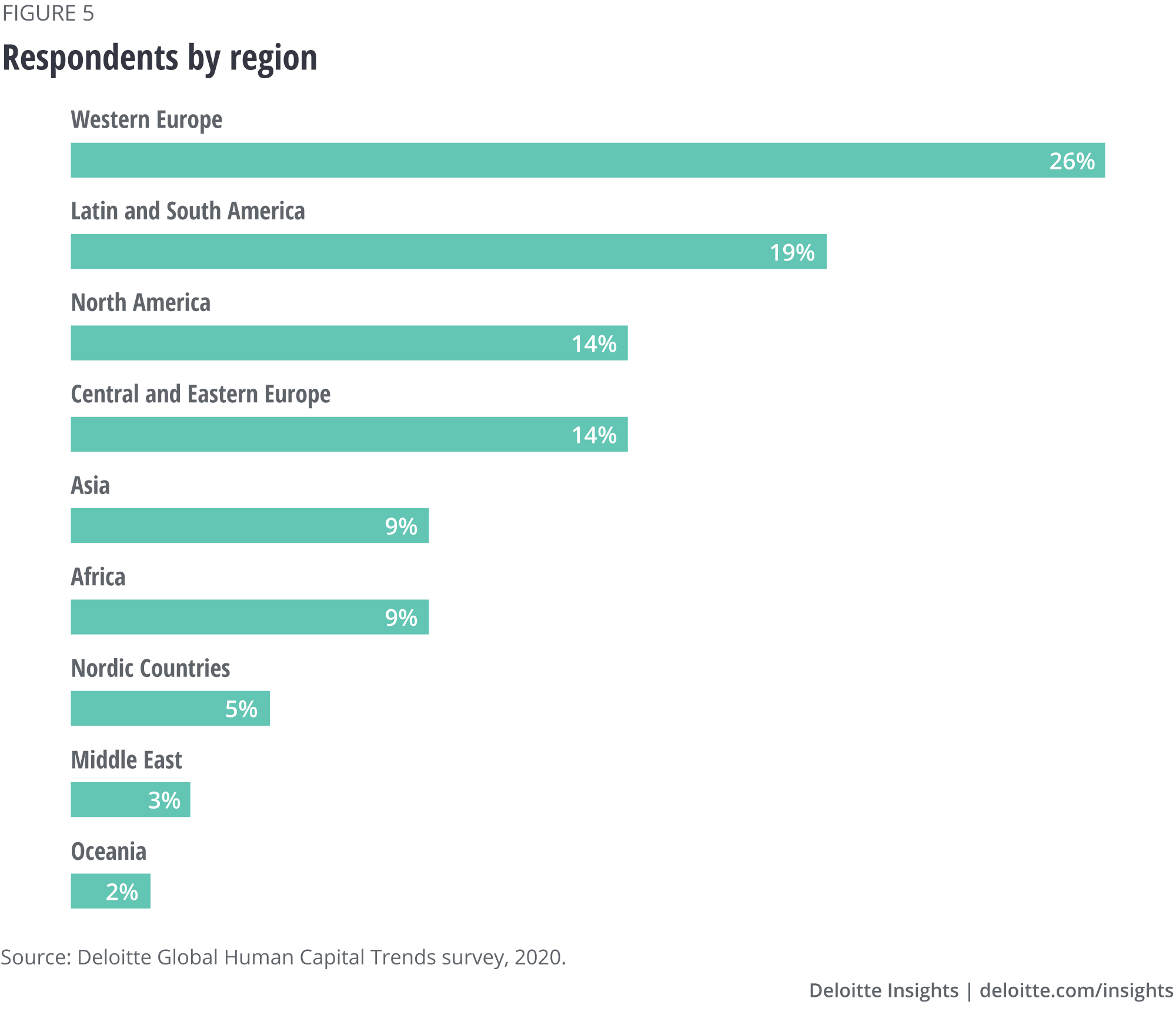

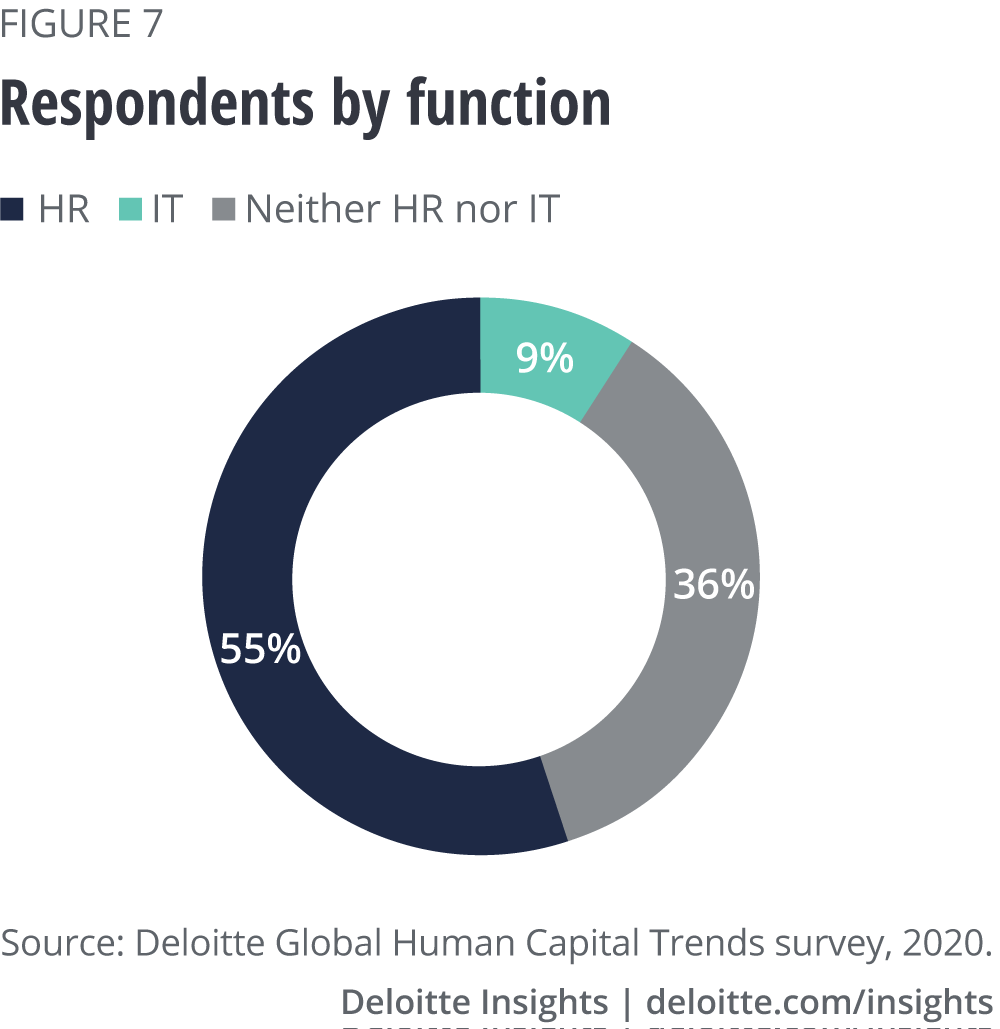
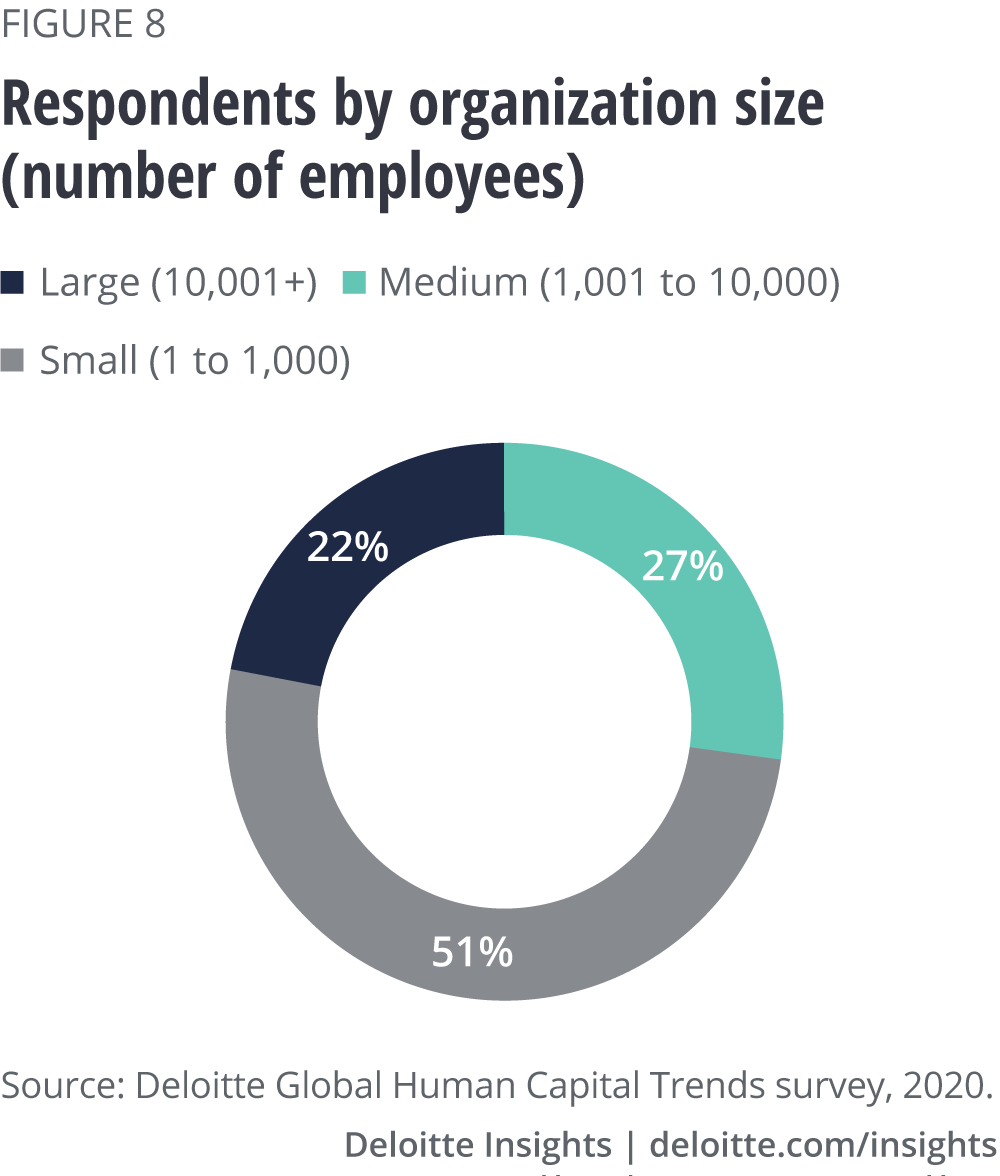
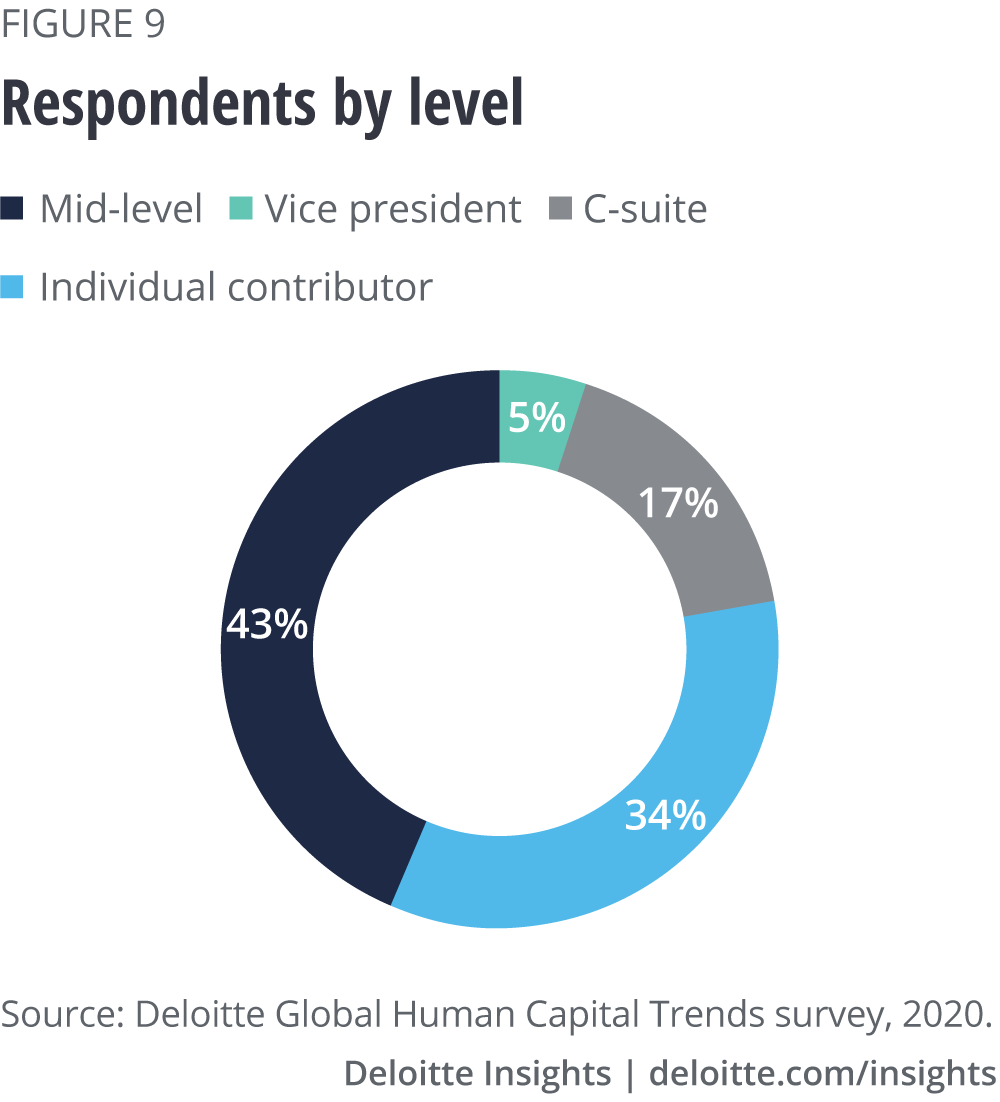

© 2021. See Terms of Use for more information.
Explore the collection
-
Superteams Article4 years ago
-
Knowledge management Article4 years ago
-
Beyond reskilling Article4 years ago
-
The compensation conundrum Article4 years ago
-
Governing workforce strategies Article4 years ago
-
Ethics and the future of work Article4 years ago



